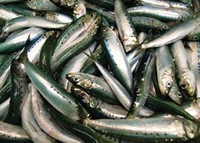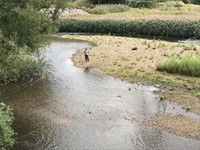Advertisement
Grab your lab coat. Let's get started
Welcome!
Welcome!
Create an account below to get 6 C&EN articles per month, receive newsletters and more - all free.
It seems this is your first time logging in online. Please enter the following information to continue.
As an ACS member you automatically get access to this site. All we need is few more details to create your reading experience.
Not you? Sign in with a different account.
Not you? Sign in with a different account.
ERROR 1
ERROR 1
ERROR 2
ERROR 2
ERROR 2
ERROR 2
ERROR 2
Password and Confirm password must match.
If you have an ACS member number, please enter it here so we can link this account to your membership. (optional)
ERROR 2
ACS values your privacy. By submitting your information, you are gaining access to C&EN and subscribing to our weekly newsletter. We use the information you provide to make your reading experience better, and we will never sell your data to third party members.
Pollution
Tiny Bits Of Plastic Found In Table Salt In China
Pollution: Sea salt sourced from the ocean might be delivering a dose of plastic to dinner plates
by Sarah Everts
October 28, 2015
| A version of this story appeared in
Volume 93, Issue 43
Diners in China who season their meals with sea salt may be unwittingly consuming microscopic pieces of plastic pollution.

When researchers analyzed fifteen brands of common table salt bought at supermarkets across China, they found among the grains of seasoning micro-sized particles of the common water bottle plastic polyethylene terephthalate, as well as polyethylene, cellophane, and a wide variety of other plastics (Env. Sci.& Tech. 2015, DOI: 10.1021/acs.est.5b03163).
The highest level of plastic contamination was found in salt sourced from the ocean: The researchers measured more than 250 particles of plastic per lb of sea salt. The team, led by Huahong Shi of East China Normal University also found tiny particles of plastic in salt sourced from briny lakes, briny wells, and salt mines, although at lower levels—between 3 and 165 particles/lb.
Shi and colleagues argue that plastic contamination originates from the vast amount of plastic pollution floating around marine environments where sea salt is sourced. For instance, bits of plastics might abrade from larger objects, such as water bottles, dumped in the water or they might come from cosmetic products, such as face washes, that use plastic microbeads as exfoliants. The researchers add that other points of entry for plastic contamination are also possible, including during salt processing, drying, and packaging.
Given that manufacturers typically extract sea salt from ocean water by evaporation—a process that leaves everything behind but water—microplastic contamination of sea salt is likely prevalent outside China as well, says Sherri Mason, who studies plastic pollution at the SUNY Fredonia. “Plastics have become such a ubiquitous contaminant, I doubt it matters whether you look for plastic in sea salt on Chinese or American supermarket shelves. I’d like to see some ‘me-too’ studies.”
According to Shi’s team, if a person were consuming Chinese sea salt at the maximal salt dose recommended by the World Health Organization, then that person would ingest about 1,000 plastic microparticles annually. This is still less than the estimated 11,000 particles of microplastic ingested annually in Europe by consumers of shellfish, which can get contaminated by the tiny bits of marine pollution, according to a report released last year.
Given that there are heavy metals and other chemicals of concern in plastic pollution, it’s wise to minimize the entry of plastic into the food chain, Mason adds.
This article has been translated into Spanish by Divulgame.org and can be found here.





Join the conversation
Contact the reporter
Submit a Letter to the Editor for publication
Engage with us on Twitter